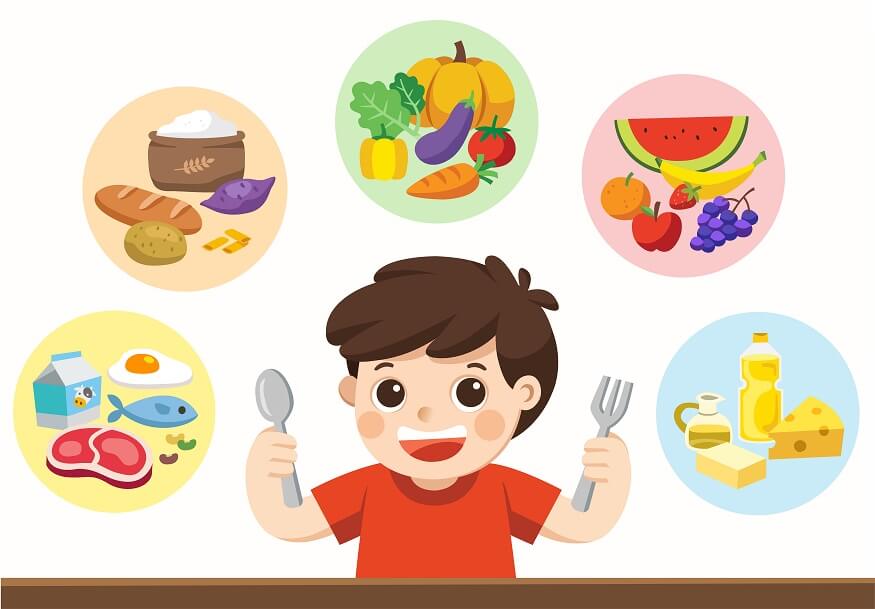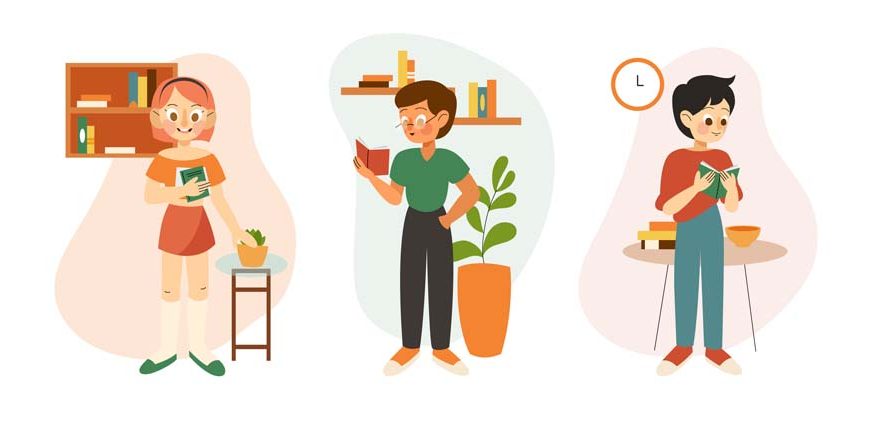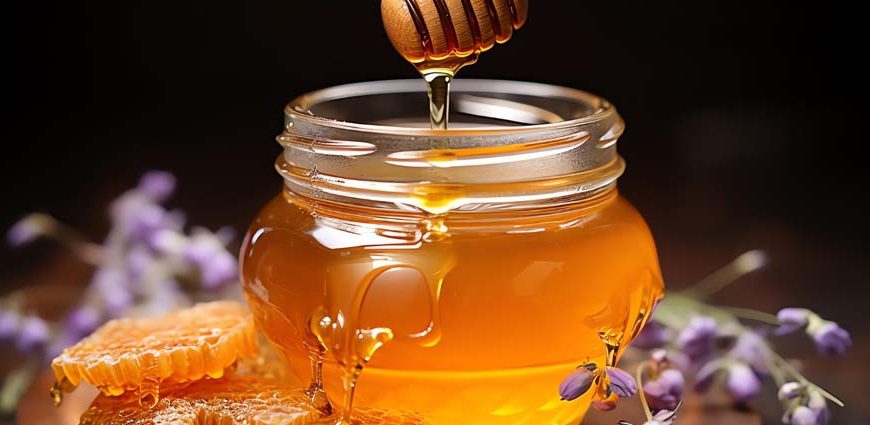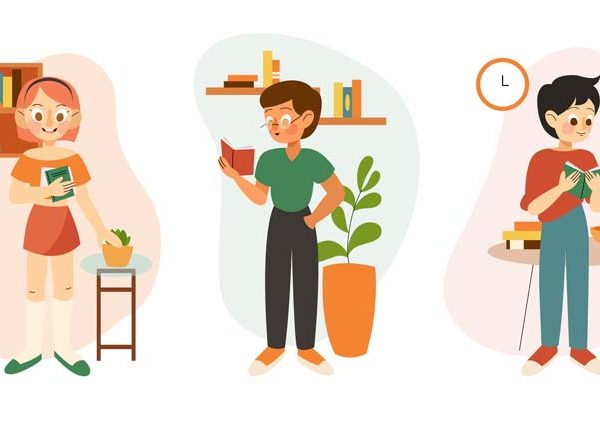A healthy and balanced diet is something that stands us in good stead throughout our lives. And there’s no better time to start educating your preschoolers about the food groups and food group nutrients than the present. It’s important to teach your kid about the nutritional value of the main food groups and which food groups give us energy and which give us strength.
Food Groups
The different kinds of food can be divided into 5 main food groups which are fruit and vegetables, carbohydrates, protein, dairy and fat. We need to know how much of each group we need to eat so that we have a balanced diet. It is also important to know about the nutritional value of each food group and their sources.
Often you may read about 7 food groups but these refer to the 7 kinds of nutrients — carbohydrates, protein, fats, fibre, minerals, vitamins and water you get by consuming food from the 5 food groups we mentioned earlier.
1. Fruit and Vegetables
For a healthy, balanced diet, fruit and vegetables should comprise the greatest proportion of one’s diet. One should eat 5 portions of fruit and vegetables a day as they supply us with important nutrients and are vital for good health.
- They are a good source of fibre and water. This enables good digestion, lowers cholesterol and improves bowel health.
- They are also the main source of vitamins and minerals in our diet. This helps to improve the immune system to fight off disease.
- They give your child energy and are packed with antioxidants.
- They offer protection from diseases like heart disease, stroke and some cancers later in life.
To be sure you are eating enough fruit and vegetables, try to ensure that half of your plate comprises fruit and vegetables. Encourage your kid to eat fruit and vegetables at every meal and for snacks. Wash them well and leave any edible skin on as the skin has nutrients too. Eat a wide range of fruit and vegetables as a rule at home because children imitate what they see.
2. Carbohydrates
Carbohydrates are one of the main food groups and should make up ⅓ of our diet. They are the main source of energy and include,
- Bread
- Potatoes
- Pasta
- Noodles
- Rice
- Breakfast cereals
- Corn
- Couscous
- Quinoa
- Polenta
- Oats
- Barley
- Grains
Carbohydrates provide us with nutrients like vitamins, calcium, iron and fibre.
They help to maintain digestive health
Carbohydrates give your child the energy they need to develop, grow and learn.
Carbohydrates can be bad for us only if eaten in large quantities as they contain a lot of starch. Whole grains are better than refined grains as they provide us with more fibre.
3. Protein
Proteins are high in nutritional value and should make up ⅛ of our diet and include fish, meat, eggs, chicken, beans, pulses, tofu, chickpeas and nuts.
- Food rich in protein provides us with amino acids that are the building blocks in our bodies. They help in growth, healing, digestion, muscle development and provide us with energy.
- Protein is a rich source of vitamins and minerals like zinc, iron, vitamin B12 and omega-3 fatty acids. Omega-3 fatty acids and iron are vital for a child’s brain and cognitive development.
Too much protein can also cause health problems. It’s also important to remember that nuts and pulses are just as important as meat in providing our body with protein.
4. Dairy
Dairy makes up a smaller portion of our diets but is vital in maintaining the body. Children should have 2 or 2½ servings a day and include milk, cheese, yoghurt and cream cheese. Other alternatives are soya drinks, yoghurts and oat, nut and rice milks.
- Dairy is the main source of calcium and maintains healthy teeth and bones.
- It’s also a good source of protein.
Dairy products are often high in fat content so one should aim for low fat options especially for children aged over 2 years. If using dairy alternatives, it’s best to talk to your paediatrician first.
5. Fats
Fats can be found in different forms in food and are both healthy and unhealthy. We need to be careful about the fats we consume as well as their quantity. Fats comprise the smallest portion of our diets and should not exceed 70 grams of which only 20 grams should be saturated fats. Saturated fats are found in oils and spreads, sweets, chocolate and biscuits. Too much saturated fat can cause weight gain, high cholesterol and heart disease. Unsaturated fats have high nutritional value and are found in oily fish, nuts and avocados. They also contain omega fats that lower cholesterol and are good for heart health. Therefore, the function of this food group is to maintain heart health.
- Fats help the body to absorb vitamins and help in growth.
- Unsaturated fats promote heart health by lowering cholesterol.
To reduce saturated fat in your diet, try cooking with vegetable oil rather than butter and substitute cream with yoghurt.
Food Groups in the Food Pyramid
All 5 basic food groups are part of the food pyramid. The food pyramid is divided into 5 layers with each layer representing one of the 5 different food groups. It also indicates the portion that food should constitute in our diet.
As fruit and vegetables are the richest source of nutrients, they make up the base of the food pyramid. Above fruit and vegetables, we have carbohydrates followed by protein and then dairy products. Fats are at the tip of the pyramid and represent the smallest portion
Foods and Drinks to Avoid
It’s best to limit the amount of certain food so that your child will have more room for healthy foods.
Fast food like potato chips, pies, burgers, takeaway pizza. cakes, chocolate, biscuits, lollies, doughnuts and pastries are best avoided. These foods are usually high in salt, saturated fat and sugar and low in fibre and regular consumption can cause childhood obesity and type-2 diabetes.
Drinks like fruit juice, soft drinks and flavoured milks are not only low in nutrients but are high in sugar causing obesity and tooth decay. They fill your child up and they stop eating their regular, healthy meals.
Foods and drinks with caffeine should also be avoided as it prevents the body from absorbing calcium well.
Caffeine is also a stimulant and gives children artificial energy.
Snacking is fine, just try to make sure they are healthy. Fruit and vegetables dipped in hummus or guacamole are good options. Sliced fruit, yoghurt or homemade banana bread are good dessert options.
All food groups have nutritional value and are important in maintaining a healthy and balanced diet. Fruit and vegetables should make up the major portion of our diets as they provide us with most of the important nutrients. But, all food groups are part of a healthy diet and should be eaten in the right proportions. Only saturated fats found in cakes, cookies, crisps and fried foods would be considered unhealthy when eaten in large quantities. The EuroKids website can offer you the latest information on the food groups and their sources if you are looking for updates.











